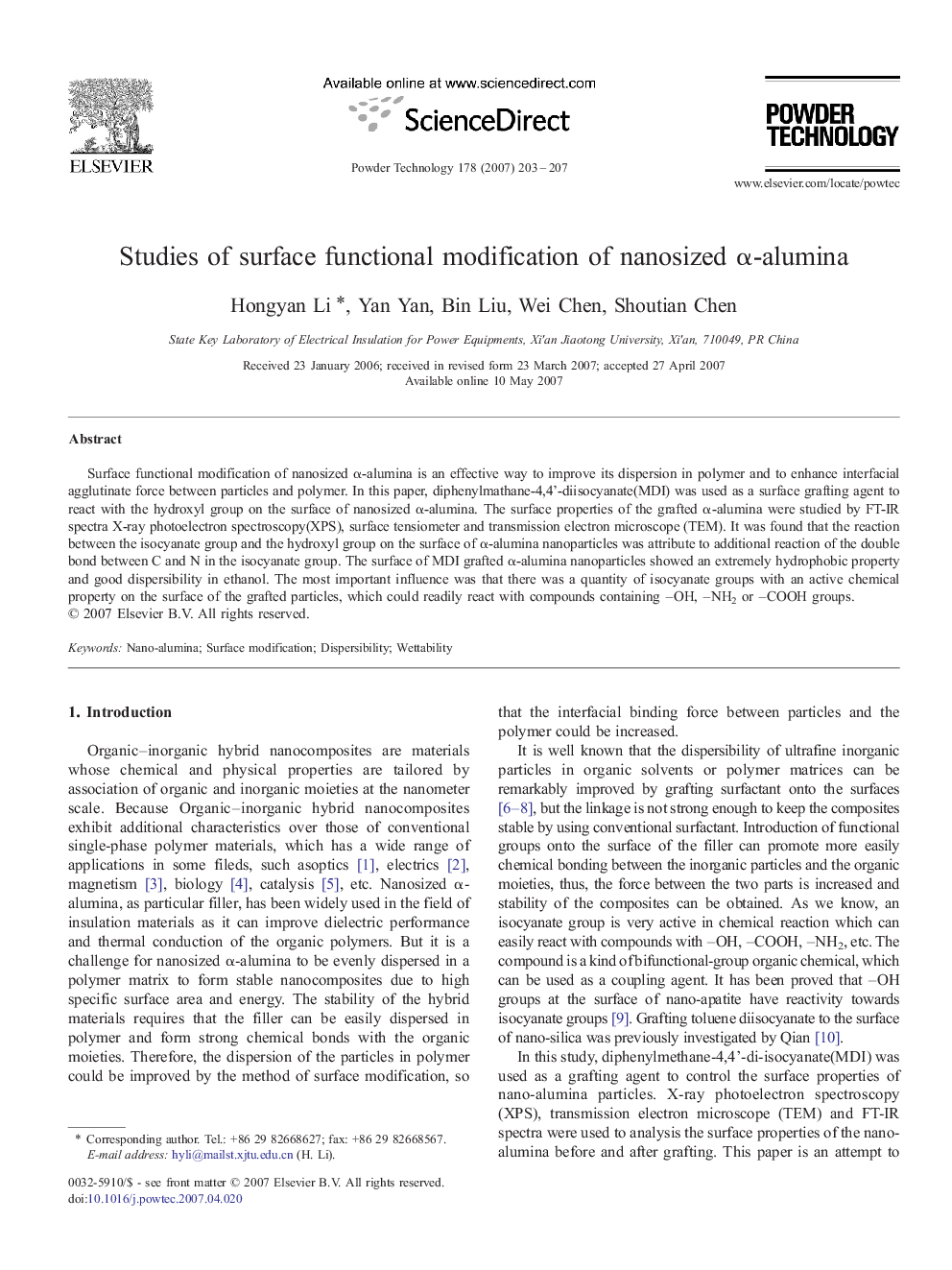| کد مقاله | کد نشریه | سال انتشار | مقاله انگلیسی | نسخه تمام متن |
|---|---|---|---|---|
| 239294 | 465812 | 2007 | 5 صفحه PDF | دانلود رایگان |

Surface functional modification of nanosized α-alumina is an effective way to improve its dispersion in polymer and to enhance interfacial agglutinate force between particles and polymer. In this paper, diphenylmathane-4,4'-diisocyanate(MDI) was used as a surface grafting agent to react with the hydroxyl group on the surface of nanosized α-alumina. The surface properties of the grafted α-alumina were studied by FT-IR spectra X-ray photoelectron spectroscopy(XPS), surface tensiometer and transmission electron microscope (TEM). It was found that the reaction between the isocyanate group and the hydroxyl group on the surface of α-alumina nanoparticles was attribute to additional reaction of the double bond between C and N in the isocyanate group. The surface of MDI grafted α-alumina nanoparticles showed an extremely hydrophobic property and good dispersibility in ethanol. The most important influence was that there was a quantity of isocyanate groups with an active chemical property on the surface of the grafted particles, which could readily react with compounds containing –OH, –NH2 or –COOH groups.
Diphenylmathane-4,4’-di- isocyanate(MDI) was used as a surface grafting agent to react with the hydroxyl group on the surface of nanosized α-alumina. The surface properties of the grafted α-alumina were studied by FT-IR spectra, X-ray photoelectron spectroscopy(XPS), surface tensiometer and transmission electron microscope (TEM). It was found that the reaction between the isocyanate group and the hydroxyl group on the surface of α-alumina nanoparticles was attribute to additional reaction of the double bond between C and N in the isocyanate group. The surface of MDI grafted α-alumina nanoparticles showed an extremely hydrophobic property and good dispersibility in ethanol. The most important influence was that there were a quantity of isocyanate groups with an active chemical property on the surface of the grafted particles, which could readily react with compounds containing -OH, -NH2 or -COOH groups.Figure optionsDownload as PowerPoint slide
Journal: Powder Technology - Volume 178, Issue 3, 25 September 2007, Pages 203–207